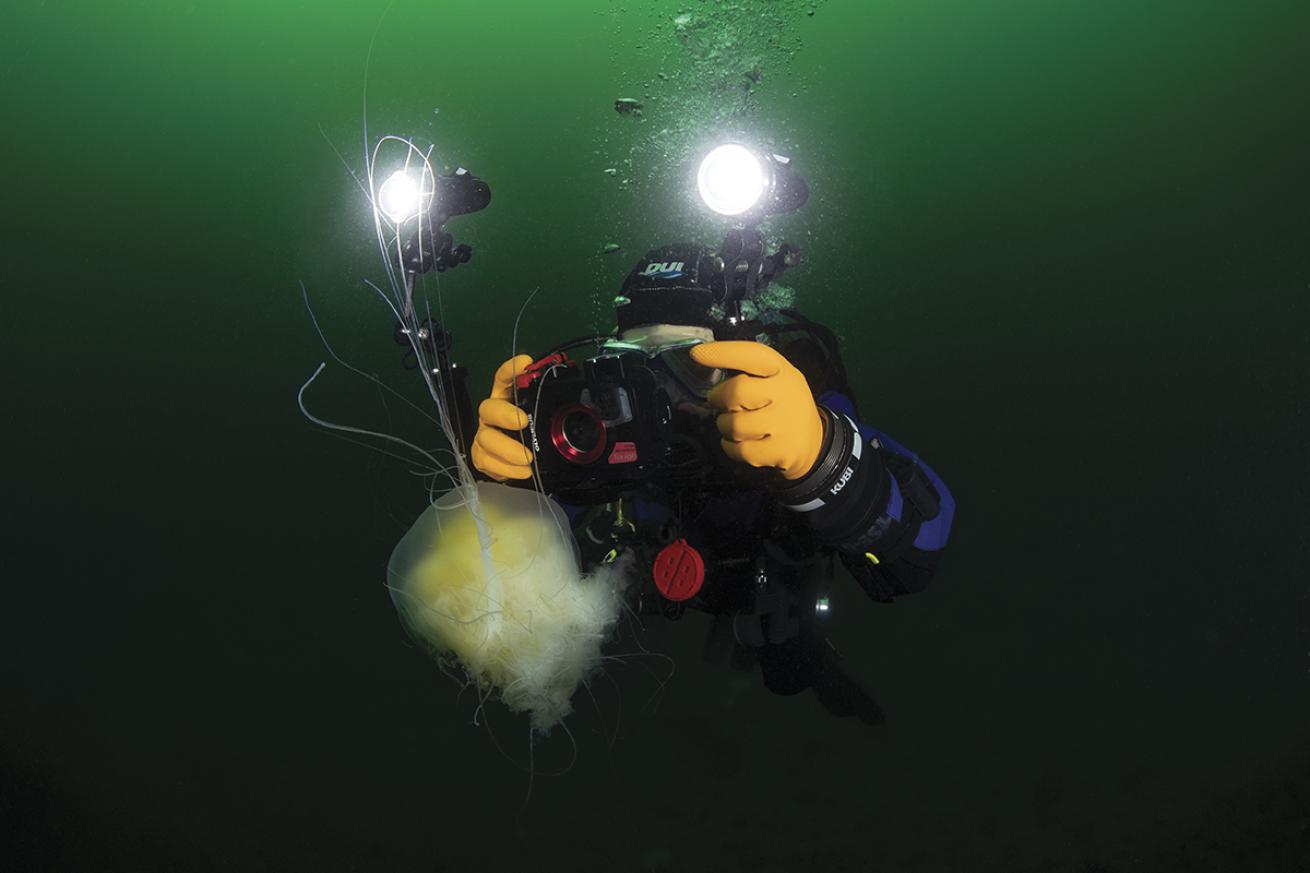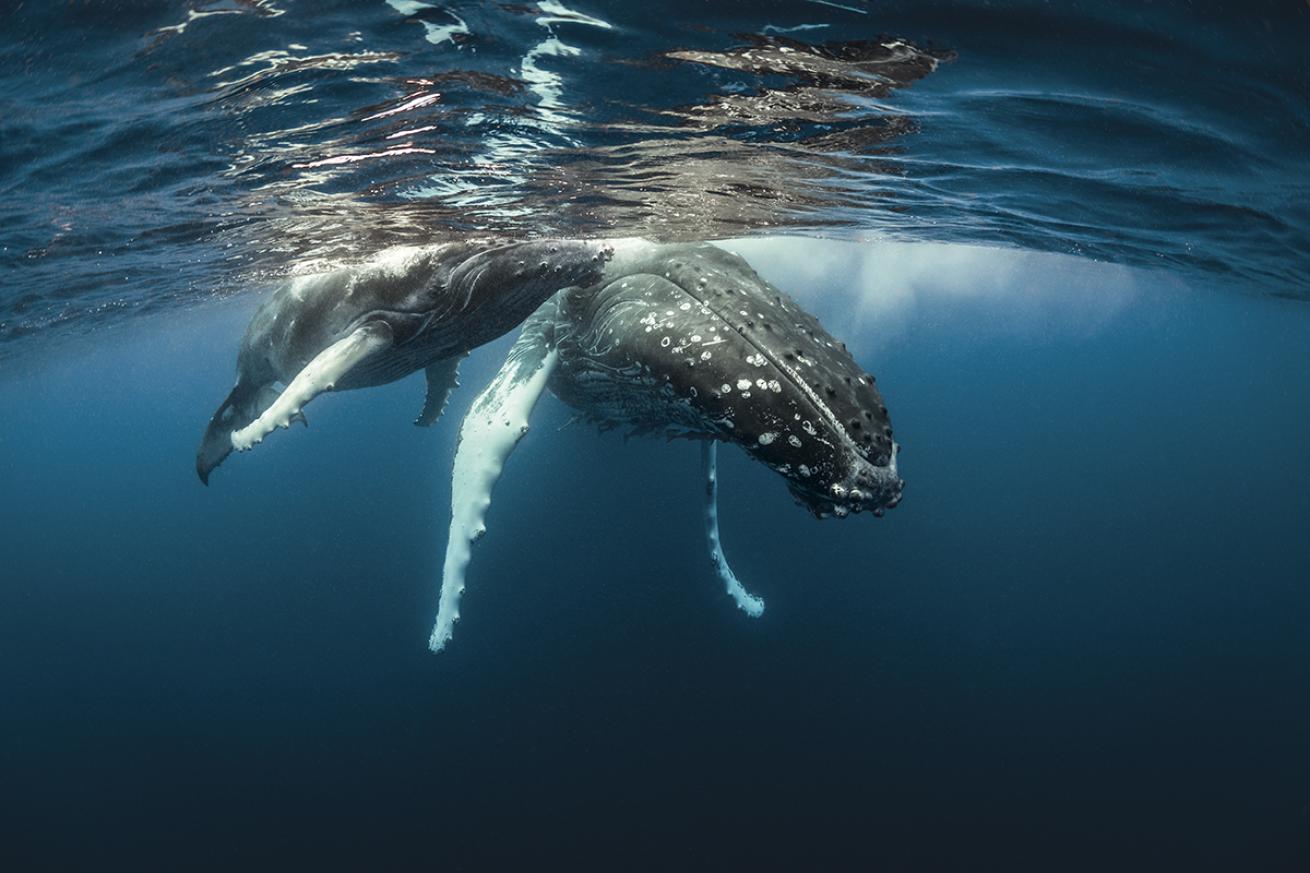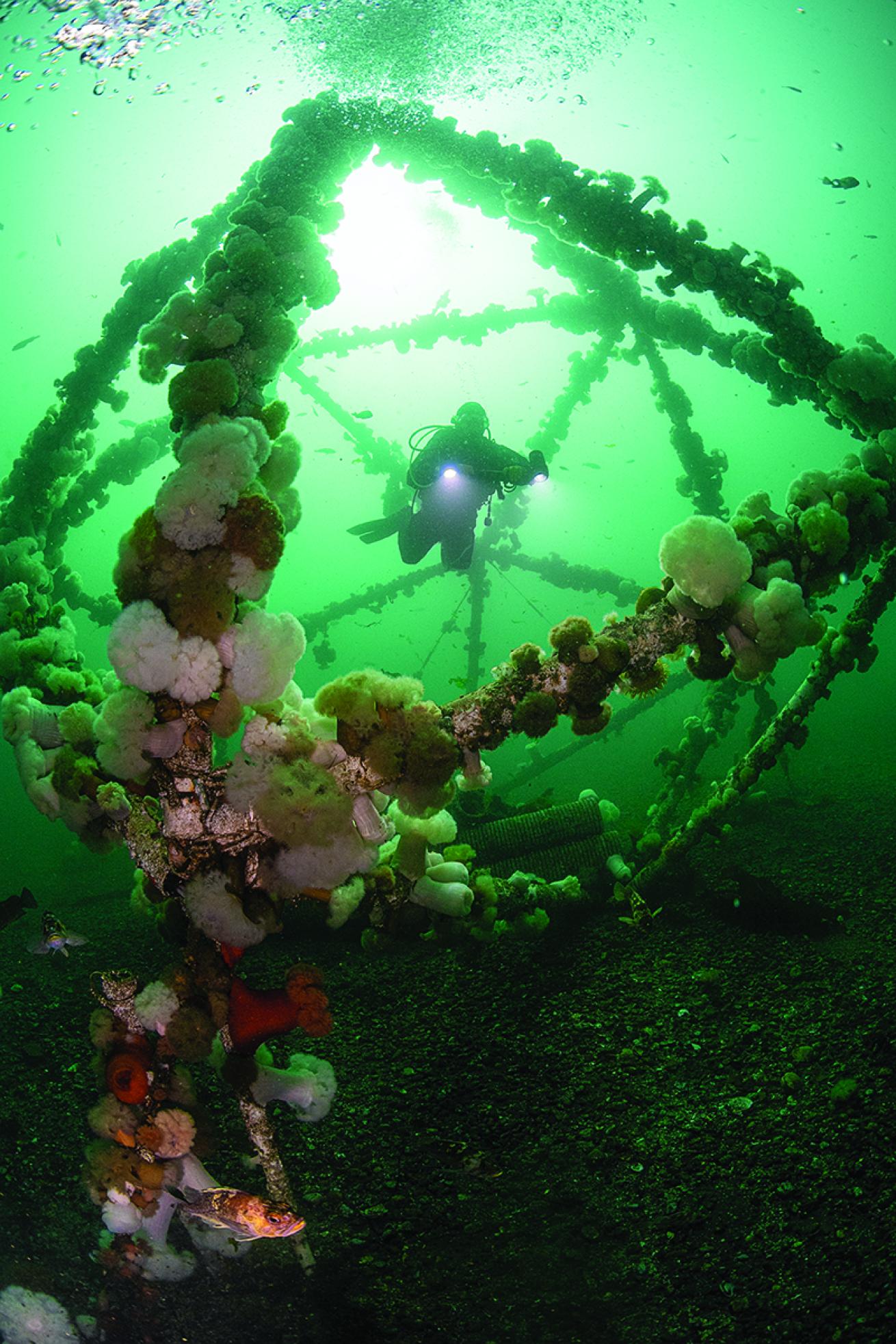Ten Tips for Taking Great Videos Underwater

Annie CrawleyA videographer focuses on an egg-yolk jelly.
Innovations in digital cameras, lighting, mobile technology and faster data-speed transfers have revolutionized underwater imaging. Ten years ago we were driven by text; today it’s visuals. Our mobile devices—and speed—changed the way we communicate. Whether you want to learn about sharks, change an O-ring, or find your next dive destination, the internet holds the answers. A picture may be worth 1,000 words, but one minute of video equals more than a million.
As divers, we carry a production company and movie theater in the palm of our hand. The power of video brings our friends and family into the action of our dives. This year, mobile viewing surpassed TV for the largest share of U.S. adult entertainment minutes. Gen Z spends nearly five hours per day on mobile devices, half of it viewing short-form video. Mobile consumption and use is unique. As the user, you are the viewer, remote control, DVR, editor, broadcaster and creator. Whether filming with a GoPro, SeaLife camera, mobile device, compact, mirrorless or a DSLR, you have the ability to capture 4K video and share minutes later.
No matter what kind of camera you choose, the principles remain the same. Start with a basic underwater imaging class. Transfer your photography skills to video. It’s a disservice to the sport of scuba diving not to share videos! Copy these 10 tips to a slate and carry them on your next dive.
1. Practice on land and at your local dive store’s swimming pool before heading out to a dive destination. Figure out your buttons and settings. Weight your camera system so it is neutrally buoyant or slightly negative. Practice filming and swimming through the water. After practicing, download immediately to your computer. Review. Shooting and editing go hand in hand. Don’t make your viewers seasick because of your filming technique.
2. Research your destination before you dive. Start thinking visually. All animals have seasons and different behaviors during the day and night. Knowing more about your subjects helps you know when to shoot.

Annie CrawleyResearch trip-of-a-lifetime destinations before you go to increase your chance of seeing the behavior you want to capture.
3. Dive with an appropriate imaging buddy. Communicate before your dive. Review hand signals. When we use cameras, our air consumption can change. If you are a bubble-blowing monster underwater, everything swims away from you. Go slowly. Commit to neutral Innovations in digital cameras, lighting, mobile technology and faster dataspeed transfers have revolutionized underwater imaging. Ten years ago we were driven by text; today it’s visuals. Our mobile devices—and speed—changed the way we communicate. Whether you want buoyancy first, camera second. Maintain horizontal body position with no dangling equipment. Get your fins up. When swimming across sand or silt, turn around to see what you are doing with your fins. Don’t have your scene silted out because of your own body movement.
4. Where is the sun? When shooting video during the day, you usually want the sun at your back. Video lights play an important role. When you think you are close enough, get closer. You want to be an arm’s length away or closer to your subject when using lights. Turn on your camera’s “zebra” settings to help with exposure, and experiment with filters and white balance. Many cameras’ auto white balances work brilliantly with lights.
5. Capture the action and the motion. There’s a balance between knowing when you need to stay in one place and when you should be moving with your subject. Practice with autofocus and manual focus. With such a plethora of cameras on the market and increased technology in low light, you need to explore what works best for your system.
6. Consider your body positioning and camera angle. You want to be parallel with your subject or a bit lower, looking up. If you are shooting macro, you need a tripod underwater. If you are filming wide-angle, you can hand-hold your system. Be vigilant about how you hold your camera as you move through the water. Your breathing and finning impacts your camera movements. Avoid camera shake. This takes practice. You want to use two hands on your camera and hold your arms rigid like a tripod while swimming.
7. Capture close-up, medium and wide-angle shots. Avoid subjects just appearing in the middle of your frame. Film subjects swimming left to right, or right to left, entering and exiting your frame. Edit (or cut) on the action. Watch your favorite movie with the sound off to get ideas on all the different camera angles the director of photography uses. A neutrally buoyant diver can capture dynamic images of moving subjects. Complement your underwater images with other divers. Although we only want to see our world underwater, our non-diving friends need to see people.

Annie CrawleyGive your buddy a light and make them your subject.
8. Beginners tend to shoot clips too short. Aim for each clip to be 20 to 30 seconds or longer. There are times you will use just one clip to share. To tell a story, you need a series of shots edited together with music or narration.
9. Fan the front port of your camera throughout your dive. When diving, water bubbles form on your camera. When you create photographs, you can easily remove an unwanted bubble or piece of hair in post-production. With video, it’s nearly impossible. There’s nothing worse than swimming with a pod of dolphins or a shiver of sharks only to find your footage ruined because of unwanted hair, dust or bubbles.
10. Download and review your footage between dives. Your shooting techniques need to change due to the depth of your dive, the sun, weather conditions and more. By reviewing your footage in real time, you can correct and know what works or doesn’t work.
Embrace your imagination and create content to engage your community. It’s all in the palm of your hand. With video you can take people on a journey of exploration or share causes you believe in, such as the impacts of climate change or plastic pollution. You don’t have to be great to get started, but you do have to get started to be great! Use #scubadivingmag when you post, and follow us at @ScubaDivingMag for a plethora of imaging ideas!
Related










